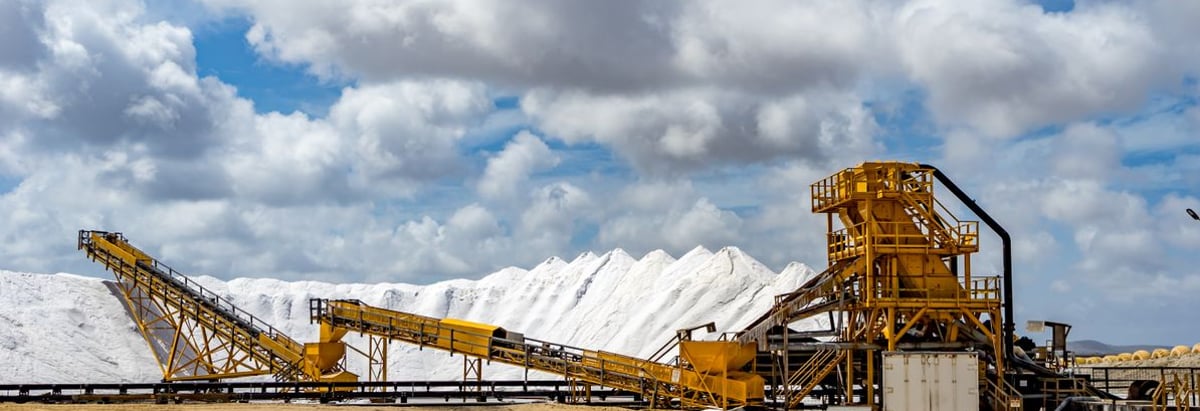Stock Analysis
- China
- /
- Metals and Mining
- /
- SHSE:600338
Is Tibet Summit ResourcesLtd (SHSE:600338) A Risky Investment?

The external fund manager backed by Berkshire Hathaway's Charlie Munger, Li Lu, makes no bones about it when he says 'The biggest investment risk is not the volatility of prices, but whether you will suffer a permanent loss of capital.' It's only natural to consider a company's balance sheet when you examine how risky it is, since debt is often involved when a business collapses. Importantly, Tibet Summit Resources Co.,Ltd. (SHSE:600338) does carry debt. But the real question is whether this debt is making the company risky.
Why Does Debt Bring Risk?
Debt assists a business until the business has trouble paying it off, either with new capital or with free cash flow. In the worst case scenario, a company can go bankrupt if it cannot pay its creditors. However, a more common (but still painful) scenario is that it has to raise new equity capital at a low price, thus permanently diluting shareholders. Of course, plenty of companies use debt to fund growth, without any negative consequences. The first step when considering a company's debt levels is to consider its cash and debt together.
See our latest analysis for Tibet Summit ResourcesLtd
What Is Tibet Summit ResourcesLtd's Net Debt?
As you can see below, Tibet Summit ResourcesLtd had CN¥231.3m of debt at September 2024, down from CN¥299.9m a year prior. However, because it has a cash reserve of CN¥13.5m, its net debt is less, at about CN¥217.9m.
A Look At Tibet Summit ResourcesLtd's Liabilities
According to the last reported balance sheet, Tibet Summit ResourcesLtd had liabilities of CN¥2.16b due within 12 months, and liabilities of CN¥20.1m due beyond 12 months. Offsetting this, it had CN¥13.5m in cash and CN¥110.9m in receivables that were due within 12 months. So its liabilities outweigh the sum of its cash and (near-term) receivables by CN¥2.06b.
Tibet Summit ResourcesLtd has a market capitalization of CN¥9.30b, so it could very likely raise cash to ameliorate its balance sheet, if the need arose. However, it is still worthwhile taking a close look at its ability to pay off debt.
We use two main ratios to inform us about debt levels relative to earnings. The first is net debt divided by earnings before interest, tax, depreciation, and amortization (EBITDA), while the second is how many times its earnings before interest and tax (EBIT) covers its interest expense (or its interest cover, for short). Thus we consider debt relative to earnings both with and without depreciation and amortization expenses.
Tibet Summit ResourcesLtd has a very low debt to EBITDA ratio of 0.69 so it is strange to see weak interest coverage, with last year's EBIT being only 0.63 times the interest expense. So one way or the other, it's clear the debt levels are not trivial. Shareholders should be aware that Tibet Summit ResourcesLtd's EBIT was down 64% last year. If that earnings trend continues then paying off its debt will be about as easy as herding cats on to a roller coaster. The balance sheet is clearly the area to focus on when you are analysing debt. But it is Tibet Summit ResourcesLtd's earnings that will influence how the balance sheet holds up in the future. So if you're keen to discover more about its earnings, it might be worth checking out this graph of its long term earnings trend.
Finally, a company can only pay off debt with cold hard cash, not accounting profits. So we always check how much of that EBIT is translated into free cash flow. During the last three years, Tibet Summit ResourcesLtd burned a lot of cash. While that may be a result of expenditure for growth, it does make the debt far more risky.
Our View
On the face of it, Tibet Summit ResourcesLtd's conversion of EBIT to free cash flow left us tentative about the stock, and its EBIT growth rate was no more enticing than the one empty restaurant on the busiest night of the year. But at least it's pretty decent at managing its debt, based on its EBITDA,; that's encouraging. Overall, we think it's fair to say that Tibet Summit ResourcesLtd has enough debt that there are some real risks around the balance sheet. If all goes well, that should boost returns, but on the flip side, the risk of permanent capital loss is elevated by the debt. When analysing debt levels, the balance sheet is the obvious place to start. However, not all investment risk resides within the balance sheet - far from it. For example, we've discovered 1 warning sign for Tibet Summit ResourcesLtd that you should be aware of before investing here.
At the end of the day, it's often better to focus on companies that are free from net debt. You can access our special list of such companies (all with a track record of profit growth). It's free.
Valuation is complex, but we're here to simplify it.
Discover if Tibet Summit ResourcesLtd might be undervalued or overvalued with our detailed analysis, featuring fair value estimates, potential risks, dividends, insider trades, and its financial condition.
Access Free AnalysisHave feedback on this article? Concerned about the content? Get in touch with us directly. Alternatively, email editorial-team (at) simplywallst.com.
This article by Simply Wall St is general in nature. We provide commentary based on historical data and analyst forecasts only using an unbiased methodology and our articles are not intended to be financial advice. It does not constitute a recommendation to buy or sell any stock, and does not take account of your objectives, or your financial situation. We aim to bring you long-term focused analysis driven by fundamental data. Note that our analysis may not factor in the latest price-sensitive company announcements or qualitative material. Simply Wall St has no position in any stocks mentioned.
About SHSE:600338
Tibet Summit ResourcesLtd
Develops and produces non-ferrous metal mineral resources in China.


